Polar bears are one of the most incredible animals on Earth. They are massive marine animals and have a number of adaptations that allow them to survive in their harsh Arctic environment. Let’s explore 10 incredible polar bear facts that you may not already know!
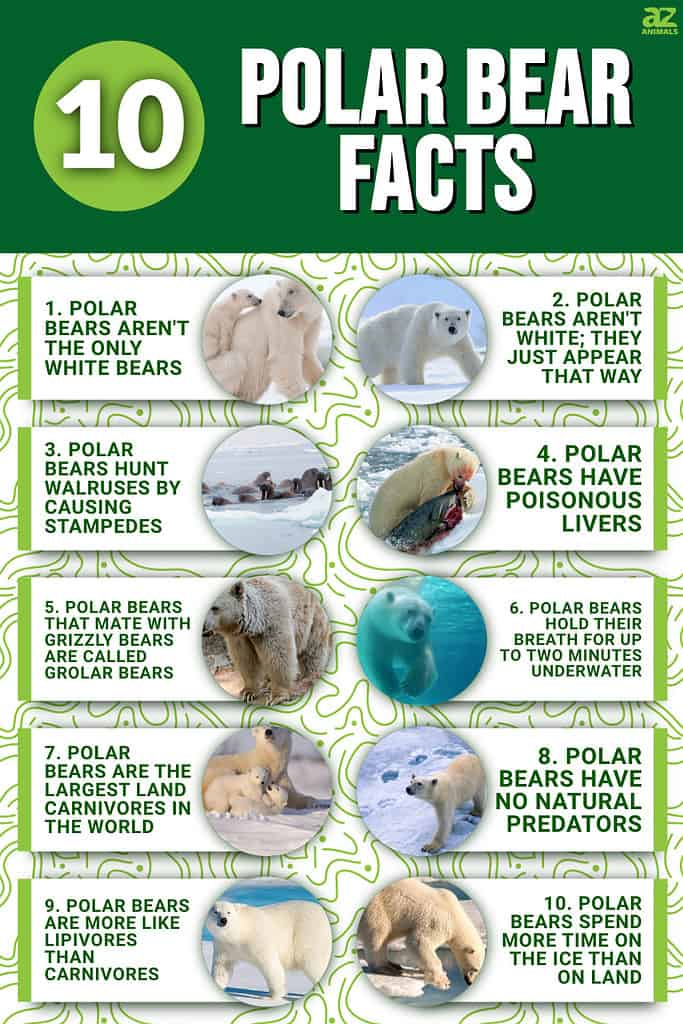
We think you’ll be surprised by some of the unique polar bear facts below. For example, did you know that polar bears aren’t actually white? Or that eating a polar bear’s liver could poison you? Read on to learn more!
1. Polar bears aren’t the only white bears
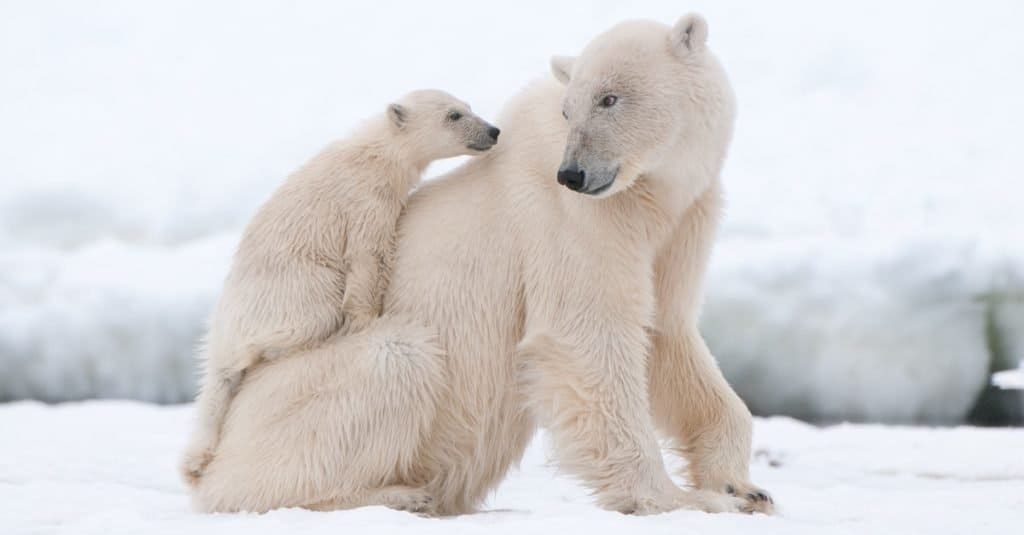
A polar bear spends more time on ice floes than on land.
©Gecko1968/Shutterstock.com
In the coastal regions of British Columbia, there are subspecies of black bears, sometimes born with white fur. These white or cream-colored bears of the Great Bear Rainforest are called Kermode bears. They’re also called “spirit bears” by the local First Nations people and regarded as sacred creatures.
There are only about 100-500 Kermode bears in the wild, making them one of the rarest animals on Earth. Although technically black bears, Kermode or spirit bears often have white or cream-colored fur due to a recessive gene.
It’s important to note that Kermode bears aren’t the same as albino bears. While albino bears have pink eyes and a white coat, Kermode bears have dark eyes with a white or cream coat.
Spirit bears are primarily solitary animals, except when mothers nurture their cubs. These bears spend most of their time under the shelter of large trees or burrow inside old hollowed-out trees during winter.
Humans hunt kermode bears for their fur. However, in 2012 First Nation tribes along the coast of the Great Bear Rainforest (British Columbia) established a trophy hunting ban on Kermode bears. And as of 2017, trophy hunting of grizzly bears is also banned in the Great Bear Rainforest.
2. Polar bears aren’t white; they just appear that way

The polar bear’s fur looks white, but its hair is clear and hollow.
©Vaclav Sebek/Shutterstock.com
Did you know that polar bear hair isn’t white? Polar bear fur is clear of color but appears white as light passes through it. Underneath their fur, polar bears have black skin as a contrast to the clear hair of their coat. Polar bear fur is also hollow, which helps them stay buoyant in water and keeps them warm in the cold arctic climate. Hair that is hollow causes light passing through it to scatter and change how the hair looks. Together, these factors give polar bears the appearance of being white.
It’s also a fun fact that polar bear tongues appear blue or purple. Why? Again, the contrast against their white-looking fur makes the skin of their tongues appear dark.
3. Polar bears hunt walruses by causing stampedes

Chasing walruses into a chaotic situation can end up providing polar bears with some easy prey.
©Captain Budd Christman, NOAA Corps, Public domain, via Wikimedia Commons – License
When a polar bear wants a walrus for dinner, it rarely attacks the animal directly. Instead, polar bears sneak up on the walruses, staying downwind so the bears aren’t detected. When they are close enough, the polar bears charge at the walruses and try to herd them into the water. The walruses then stampede into the water in an attempt to escape. Usually, multiple walruses are injured or even killed in the chaos of the stampede. This moment is when the polar bears will make their move, eating the wounded animals.
Polar bears are very successful at hunting walruses this way and can often take down several at a time. Walruses are an essential part of the polar bear’s diet and help it survive in the harsh conditions of the Arctic.
4. Polar bears have poisonous livers
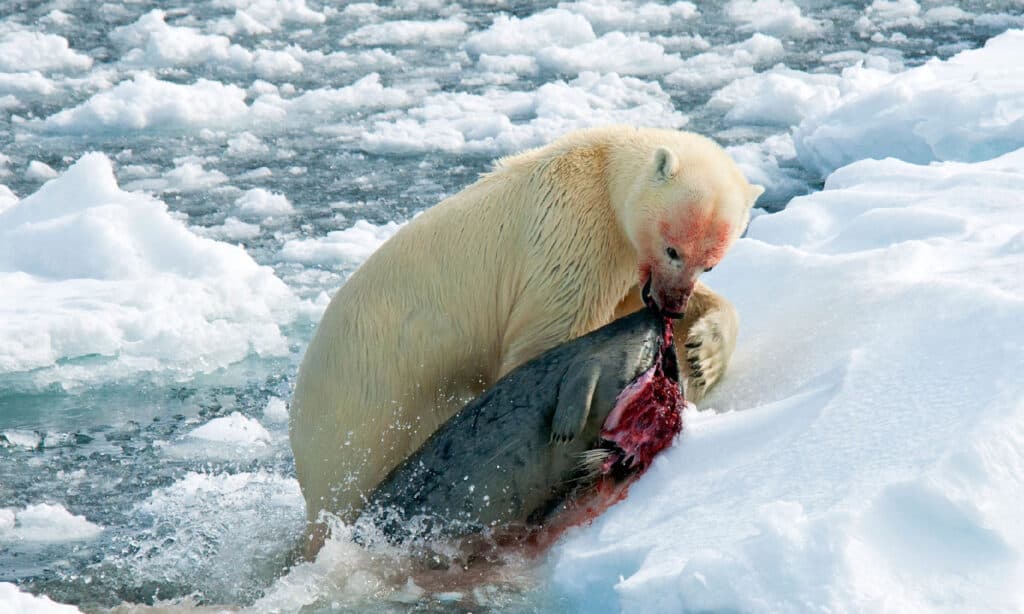
Polar bears usually hunt seals, which are very fatty, and this leaves a toxic level of vitamin A in their livers.
©iStock.com/AGAMI stock
Eating just one polar bear’s liver could kill a human. The high level of vitamin A in the bear’s liver is the cause of the poison. Vitamin A is essential for human health, but too much of it is dangerous.
Why does a polar bear have so much vitamin A in their liver? Because polar bears eat a high percentage of fat from seals and other marine animals. Vitamin A is fat-soluble, so this vitamin gets concentrated in fat tissue. As a result, the liver stores excess vitamin A from a polar bear’s fatty diet. Thus, that’s what makes the polar bear liver so poisonous to any animal that eats it — including humans and their pets, so don’t feed polar bear liver to your dog!
Vitamin A toxicity can cause a wide range of problems, including liver damage, joint pain, and neurological issues. While polar bears have built a tolerance to all the excess vitamin A in their bodies, humans and most other animals can’t survive ingesting the amount of vitamin A stored in a polar bear’s liver.
5. Polar bears that mate with grizzly bears are called grolar bears
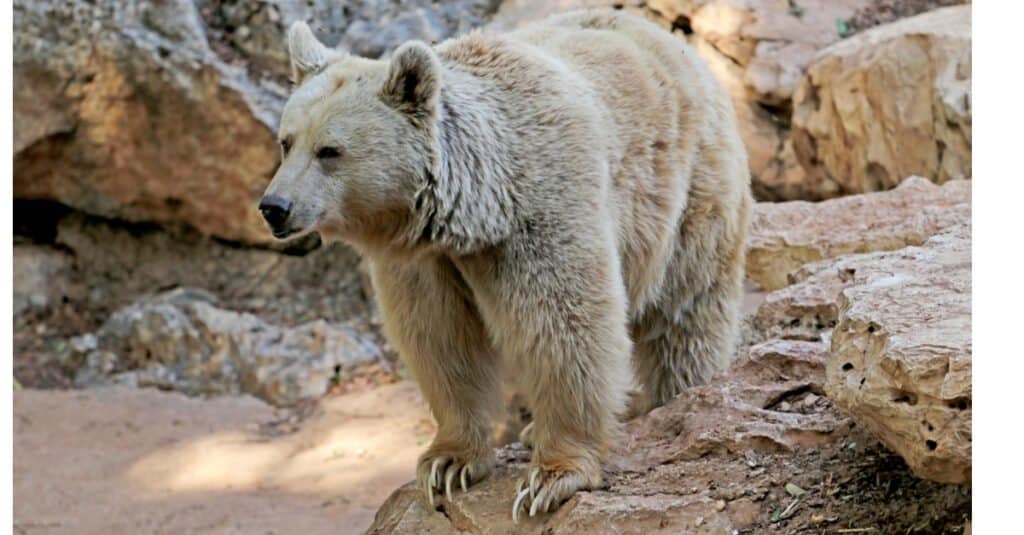
A grolar bear is a hybrid species formed from polar and grizzly bears.
©Yurii 1111/Shutterstock.com
The grolar or pizzly bear is a rare hybrid species of bear formed from the crossing of a male grizzly bear with a female polar bear. Other names for the Grolar bear include the grizzlar and the zebra bear. These bears are born in the wild and currently exist in small numbers throughout the Arctic region.
The first grolar bear sighting confirmed by DNA testing occurred in the Northwest Territories of Canada in 2006. A polar bear hunter shot and killed the grolar before learning that it was actually a hybrid bear.
Grolar bears have a unique physical appearance, with light brown fur often tipped with white. In addition, the fur on the grolar’s legs is darker than the fur on their head and back. Grolar bears are bigger than grizzlies but smaller than polar bears.
Like the polar bear, the grolar bear is an apex predator and feeds on a variety of prey items, including seals, walruses, and other marine mammals. They are also known to eat plant material and garbage.
6. Polar bears hold their breath for up to two minutes underwater

Polar bears can hold their breath underwater for up to two minutes!
©Vladimir Gjorgiev/Shutterstock.com
Polar bears are powerful swimmers with strong lungs. In addition, these bears can hold their breath underwater for as long as two minutes at a time! This ability is beneficial because it allows them more time to hunt for food while submerged below the water’s surface. Also, holding their breath this long helps them avoid detection by humans. When polar bears are underwater, they are tough to spot. Therefore, their ability to hold their breath this long gives polar bears a significant advantage in terms of survival when hunted by man.
How do polar bears hold their breath for two minutes? First, polar bears have a large lung capacity and a high concentration of myoglobin in their muscles. Myoglobin is an oxygen-binding protein that helps to store oxygen in muscle tissue. Second, polar bears have a slow heart rate and low body temperature, which help conserve oxygen. Finally, polar bears (and other marine mammals) have muscles that continue to function well through a lack of oxygen called “anaerobic respiration” for short periods while underwater.
7. Polar bears are the largest land carnivores in the world
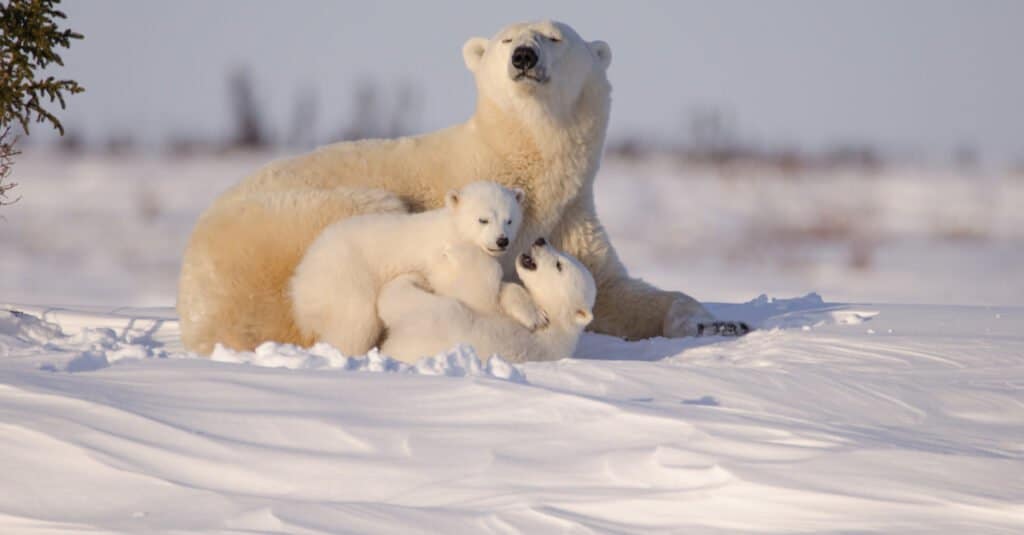
The polar bear is the biggest carnivore living on land.
©Anne Kiel/Shutterstock.com
Did you know that polar bears grow up to 10 feet (3 meters) long? For this reason, polar bears are the largest carnivores that live on land. In addition, these enormous Arctic animals weigh up to 1,600 lbs (725 kg). The largest polar bear on record was a male in Alaska, weighing over 2,000 lbs (907 kg)!
Polar bears are land carnivores that spend much of their time hunting from ice floes in the ocean. Most polar bears live in the Arctic Circle, where they hunt for seals. They also inhabit parts of Russia, Greenland, Iceland, Canada, and the United States in Alaska. A few thousand polar bears live in the southernmost part of their range, including Norway’s Svalbard archipelago.
8. Polar bears have no natural predators
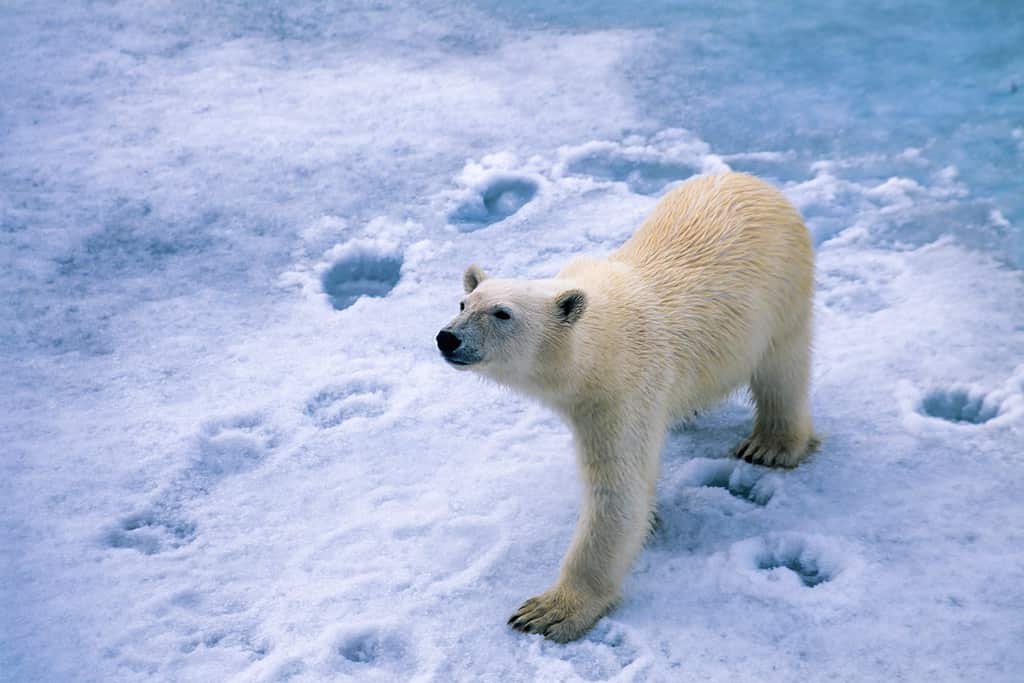
Polar bears really only need to worry about humans in the wild.
©Lasse Johansson/Shutterstock.com
Polar bears have no natural predators because they are the largest and most powerful animals in their environment. As a result, they are top predators in the Arctic food web, and no other animal poses a significant threat to them. So, polar bears are considered one of the most dangerous animals in the world – they have nothing to fear from any other wild animal.
The biggest threat to polar bear populations is humans. We hunt them for their fur, which is highly prized and very valuable. We also kill them for food, although this is much less common. As human populations have grown and we have encroached more and more into their territory, polar bears have become increasingly threatened.
9. Polar bears are more like lipivores than carnivores
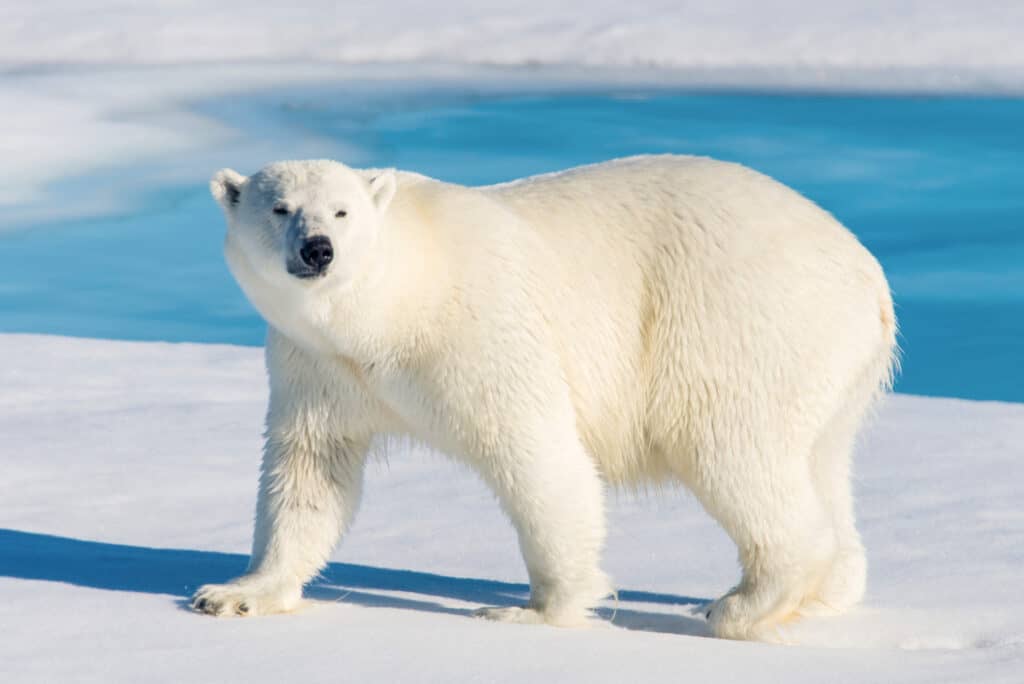
Fat is a crucial part of polar bears food intake.
©iStock.com/Alexey_Seafarer
This point is up for debate, but some polar bear enthusiasts argue that fat consumption is more important for polar bear survival than meat. For this reason, polar bears are lipivores, as they consume a large amount of lipid (fat) in their diet. Lipid is an important energy source for polar bears and helps them stay warm in their Arctic habitat. Therefore, when an adult polar bear eats a seal, it consumes more of the blubber (fat) than the meat.
However, most people categorize polar bears as carnivorous (meat-eaters) or hypercarnivorous bears. An animal is hypercarnivorous if more than 70% of its diet is meat.
Polar bears typically hunt for seals, which are a rich source of fat. They also eat other marine mammals, such as walruses and whale carcasses, as well as fish, birds, and vegetation. In areas where human activity has increased, polar bears eat garbage and other human food sources.
10. Polar bears spend more time on the ice than on land
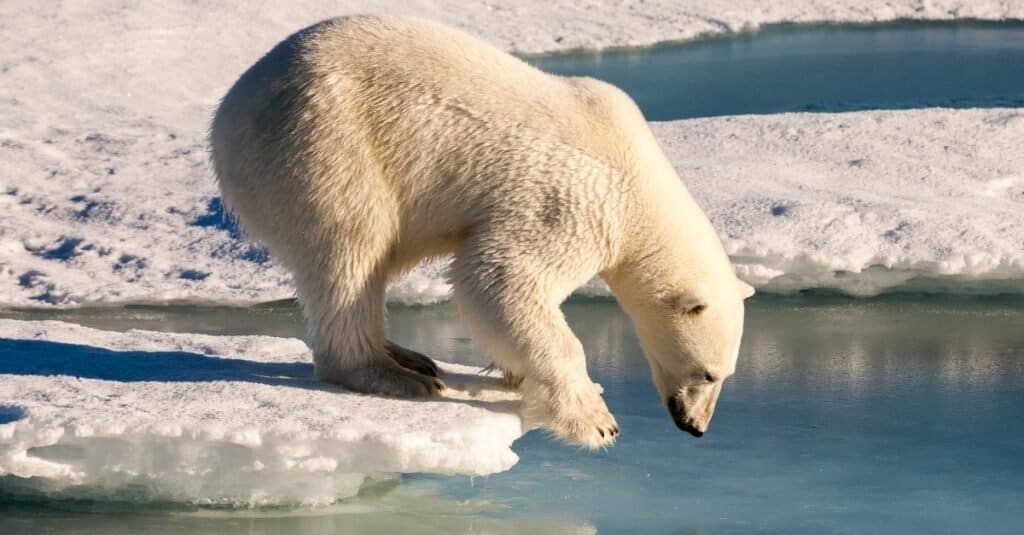
The polar bear hunts for seals by waiting on ice floes for prey to surface from the water.
©Mario_Hoppmann/Shutterstock.com
A polar bear is so well-adapted to living on ice that its scientific name, Ursus maritimus, means “sea bear.” Polar bears use sea ice as a hunting ground and a travel corridor to get from one place to another.
Polar bears are powerful swimmers and can cover long distances in the water. But they prefer to stick to ice, where they can rest and travel easily.
Climate change is causing polar bears to spend more time on land. As the sea ice melts, polar bears move onto land, where they must find food and shelter. Spending more time on land is challenging since their primary food source (seals) lives in the water.
Polar bears are adapting to spending more time on land by eating different types of food and using other dens for shelter. But it is not clear how long they will be able to continue to adapt as the climate continues to change.
The photo featured at the top of this post is © Zhiltsov Alexandr/Shutterstock.com
Thank you for reading! Have some feedback for us? Contact the AZ Animals editorial team.







